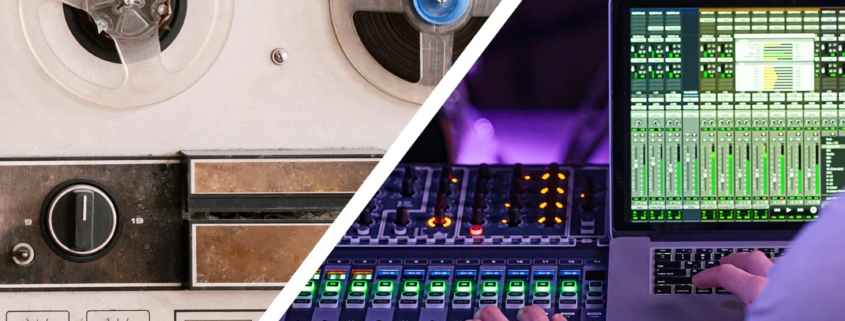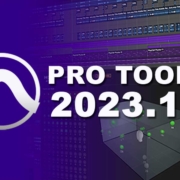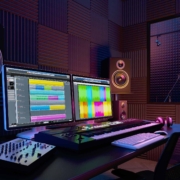The History of Audio, Analog to Digital Production | A Journey Through Time
In a world dominated by digital technology, it is easy to overlook the rich history and significance of analog audio recording. The birth and rise of analog audio recording marked a pivotal moment in the evolution of music and audio production.
Analog audio recording refers to the method of capturing sound waves using physical mediums such as magnetic tape or vinyl records. Before the advent of digital technology, this was the primary means music and other audio content were recorded, stored, and reproduced.
Milestones in Analog Audio Recording Technology
- Phonograph and Gramophone: The Early Days of Reproducing Sound | 1887
- Magnetic Tape: Revolutionizes Audio Recording and Editing | Invented in the late 1920’s. Commercialized in the late 1940s.
- Record Player: The Golden Age of Analog Sound Quality | early 1930’s
- Cassette Tapes: The Portable Music Revolution | late 1960’s
The invention of the Phonograph and the first sound recording
The Phonograph was invented by Thomas Edison in 1877. It revolutionized the way sound was recorded and reproduced. The Phonograph used a simple yet ingenious mechanism to record and playback sounds. The concept of recording played a significant role in the development of the analog tape recorder.
The recording process of the Phonograph involved several key components working in harmony.
1. Rotating Cylinder and Needle
First, there was a rotating cylinder made of wax or other materials that served as the recording medium. Attached to this cylinder was a stylus or needle made of metal.
2. Cone-Shaped Horn
To begin the recording, the user would speak or sing into a cone-shaped horn connected to the Phonograph. The sound waves produced by their voice caused vibrations in the diaphragm at the base of the horn. These vibrations were then transmitted moving the stylus up and down as it traveled across the rotating cylinder.
3. The Stylus
It is a small, needle-like device that sits on the record surface of the vinyl cylinder. This created tiny indentations or grooves on the surface of the cylinder. The sound was then amplified by the cone. These grooves acted as physical representations of sound waves, capturing all nuances and variations in pitch and volume.
4. Playing Back the Recording
To play back the recorded sound, one would simply set up a similar mechanical arrangement with another stylus connected to a diaphragm and horn. As this stylus followed along with the grooves on which sound had been recorded, it vibrated accordingly.
These vibrations were then amplified by an acoustic horn attached to reproduce audible sound waves that could be heard by listeners.
The Graphophone
Back in 1879, Alexander Graham Bell and his apprentice Charles Sumner Tainter embarked on an incredible mission to enhance Thomas Edison’s invention. They gave it a whole new name – the Graphophone. With their remarkable ingenuity and unwavering dedication, they made substantial improvements that ultimately shaped the future of communication technology as we know it today.
The Gramophone | The first record player
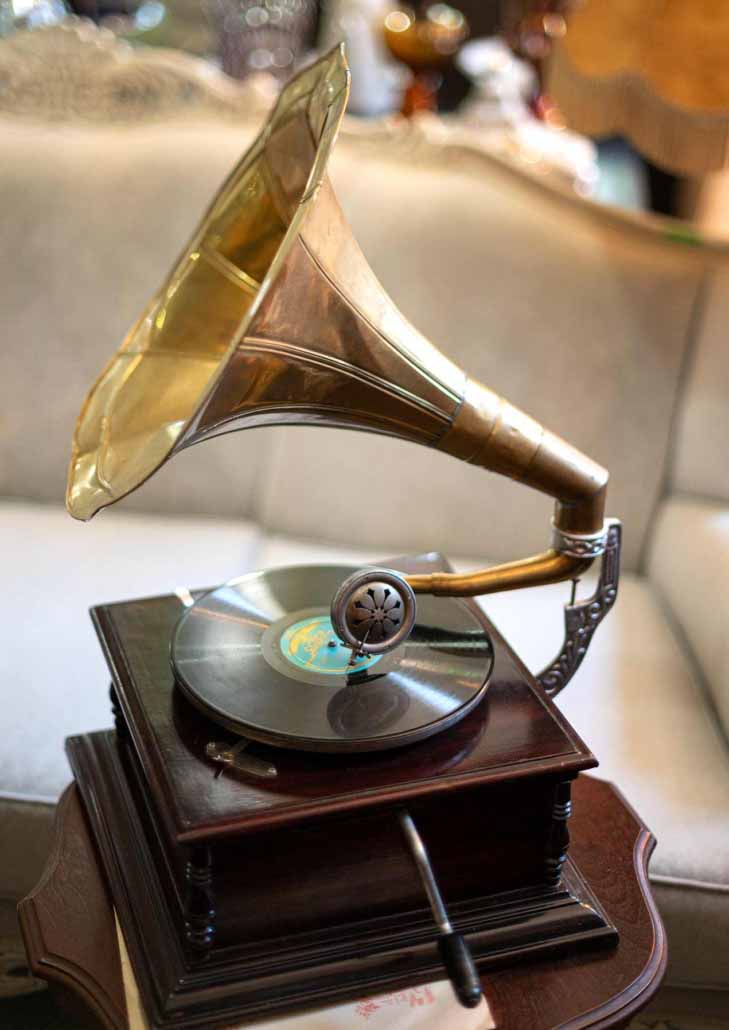
Photo by: Freepik.com
The innovative Emile Berliner, originally from Germany but later residing in the United States, is credited with inventing the Gramophone (the world’s very first record player). This device required manual operation with a crank, spinning at an impressive 70 RPM.
Like Edison’s Phonograph, the Gramophone looked very similar and used a cone-shaped horn to amplify the sound.
Its unique mechanism involved playing a 7-inch rubber vulcanite disc adorned with meticulously carved small lateral grooves along its exterior. Berliner’s invention evolved the way we enjoy music and paved the way for future advancements in audio technology. Even after all these years, its influence can still be felt in our modern-day music industry.
The evolution of the gramophone concept into the modern vinyl record player is a testament to the enduring appeal and timeless quality of music. From its humble beginnings as a mechanical device for playing sound recordings etched onto discs, the gramophone has undergone significant advancements over the years.
Today, we enjoy the rich and warm sound of vinyl records on sophisticated turntables that combine vintage aesthetics with cutting-edge technology. This evolution not only preserves the nostalgic charm of listening to music but also provides audiophiles with an unparalleled sonic experience.
Famous RCA Dog and Phonograph
Did you know? In the year 1899, a loyal dog named “Nipper” captivated attention as he originally listened intently to an Edison-Bell cylinder phonograph. Little did anyone know, this endearing terrier would later become the beloved mascot for none other than the prestigious Radio Corporation of America (RCA).
Over time, the iconic phrase “His Master’s Voice” was chosen as a trademark by the esteemed Gramophone Company Ltd.
In recognition of its enduring appeal, another adorable addition to the family, “Chipper,” joined Nipper as one half of the famous and adored “RCA dogs.” Together, they continue to captivate hearts worldwide.
Magnetic Tape Recorder
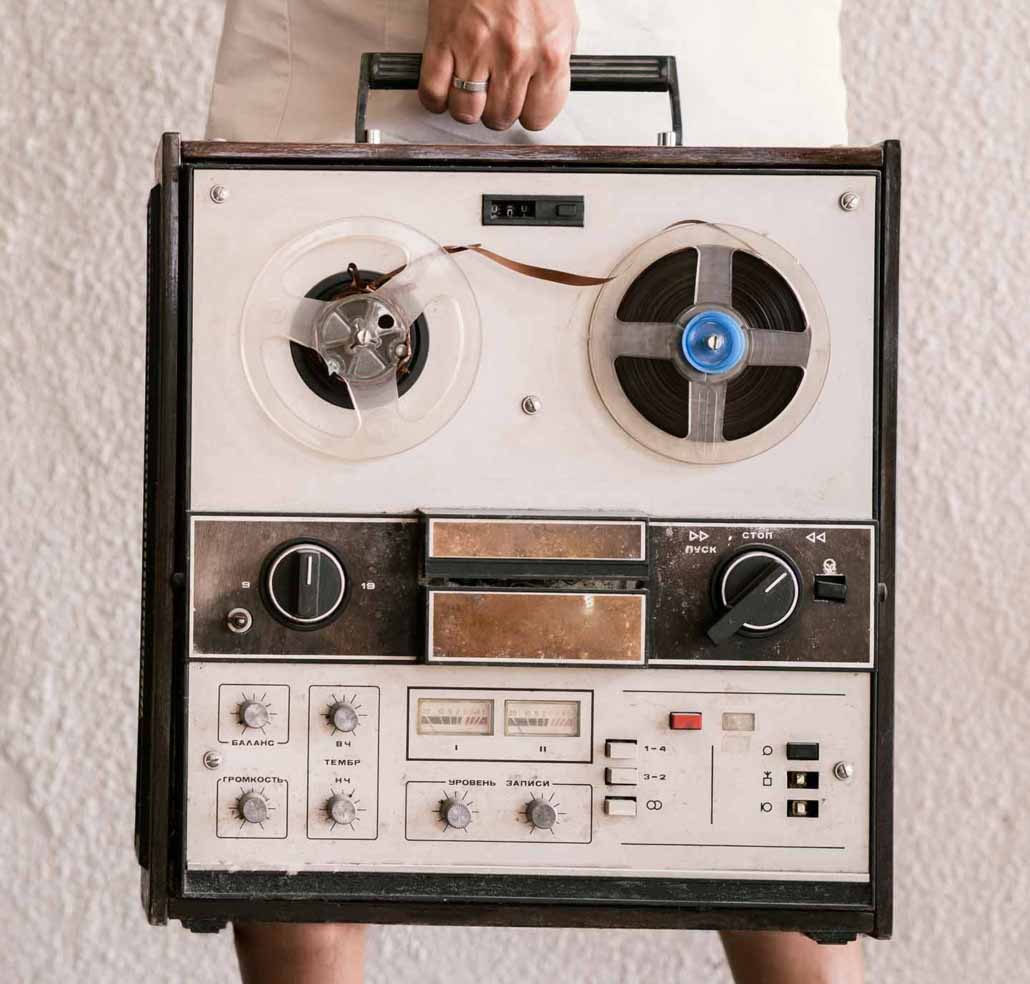
Image by: Freepik.com
The magnetic tape recorder, a groundbreaking invention that transformed the way we record and store audio, was first invented in the late 1920s. This remarkable technology allowed for the recording and playback of sound using a magnetized tape.
It was a significant milestone in the history of audio recording, providing individuals and businesses with a more efficient and reliable method for preserving sound. Since its inception, magnetic tape recorders have continued to evolve and improve, shaping the way we capture and enjoy audio content to this day.
Who is credited with inventing the magnetic tape recorder?
The invention of the magnetic tape recorder is credited to Fritz Pfleumer, a German engineer who pioneered this technology in the early 1920s. His creation restructured the way we store and reproduce sound, paving the way for countless advancements in audio recording and playback.
Through his ingenuity and relentless pursuit of innovation, Pfleumer’s magnetic tape recorder has forever changed the landscape of music, communication, and entertainment.
The Progression of Analog Multitrack Tape Machines
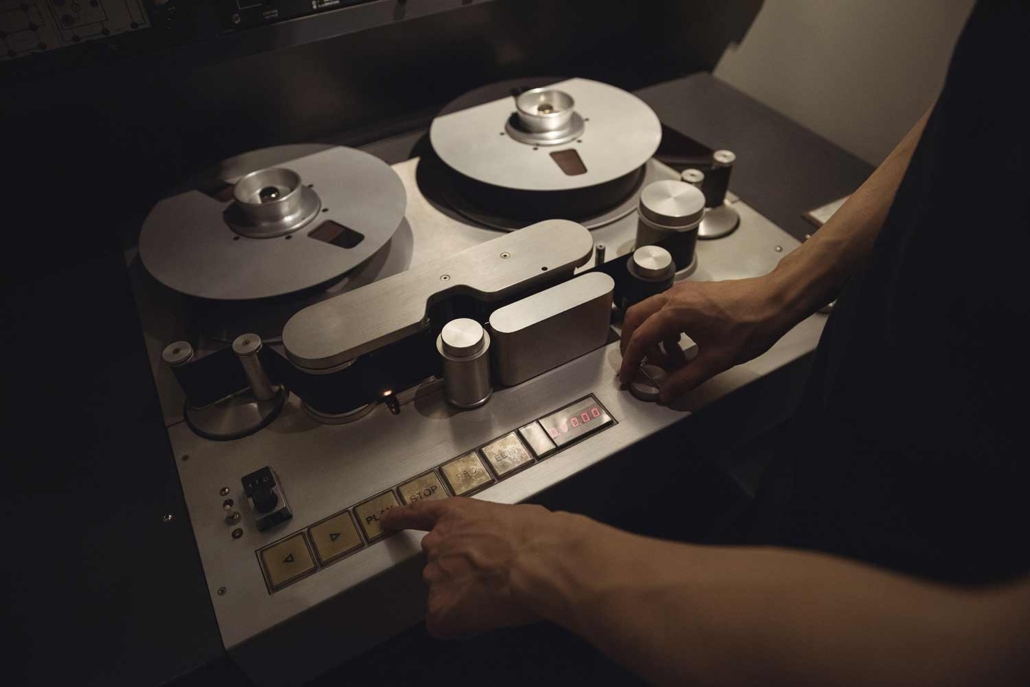
Image by: Freepik.com
As technology progressed, so did analog audio recording. Magnetic tape became widely used in professional studios during the mid-20th century. This innovation allowed for higher fidelity recordings with improved dynamic range and reduced noise compared to previous methods.
The rise of analog audio recording brought forth a golden era in music production. Artists and producers embraced its warm, organic sound that added depth and character to their recordings. From iconic bands like The Beatles to Pink Floyd, timeless classics were born through this medium.
Despite its undeniable charm, analog audio recording eventually gave way to digital technology in the late 20th century. The convenience and flexibility offered by digital formats quickly gained popularity among musicians and producers worldwide.
However, even with its decline as a mainstream method, analog audio recording continues to hold a special place in many hearts today. Audiophiles and historians appreciate its unique sonic qualities that cannot be replicated by digital means alone.
What recording studios started using multitrack tape machines?
When it comes to the origins of recording studios, one name stands out as a pioneer in the use of analog tape machines: The historic Abbey Road Studios. Located in London, the studio paved the way for modern music production by being the first to adopt this groundbreaking technology.
Back in the 1950s, before the advent of analog tape machines, recording studios relied on cumbersome and limited methods such as wax cylinders and vinyl records. However, all that changed when Abbey Road Studios introduced the use of analog tape machines.
These innovative devices allow for greater flexibility and precision in capturing and manipulating sound. With analog multitrack tape machines, musicians and producers could experiment with different sound effects, layer multiple tracks together seamlessly, and achieve a level of sonic quality that was previously unattainable.
Abbey Road Studios quickly became synonymous with innovation and excellence in audio engineering. The impact of their adoption of analog tape machines cannot be overstated – it revolutionized not only how music was recorded but also how it was produced and experienced by listeners.
Today, thanks to Abbey Road Studios’ pioneering spirit and their embrace of analog tape machines, we can enjoy an entire history of iconic recordings that have shaped the landscape of popular music.
So next time you listen to your favorite songs or marvel at the intricate production techniques employed by artists today, remember that it all started with the recording studios’ bold decision to embrace analog tape machines as their tool for capturing timeless sounds.
The Audio Cassette Tape Player Emerges
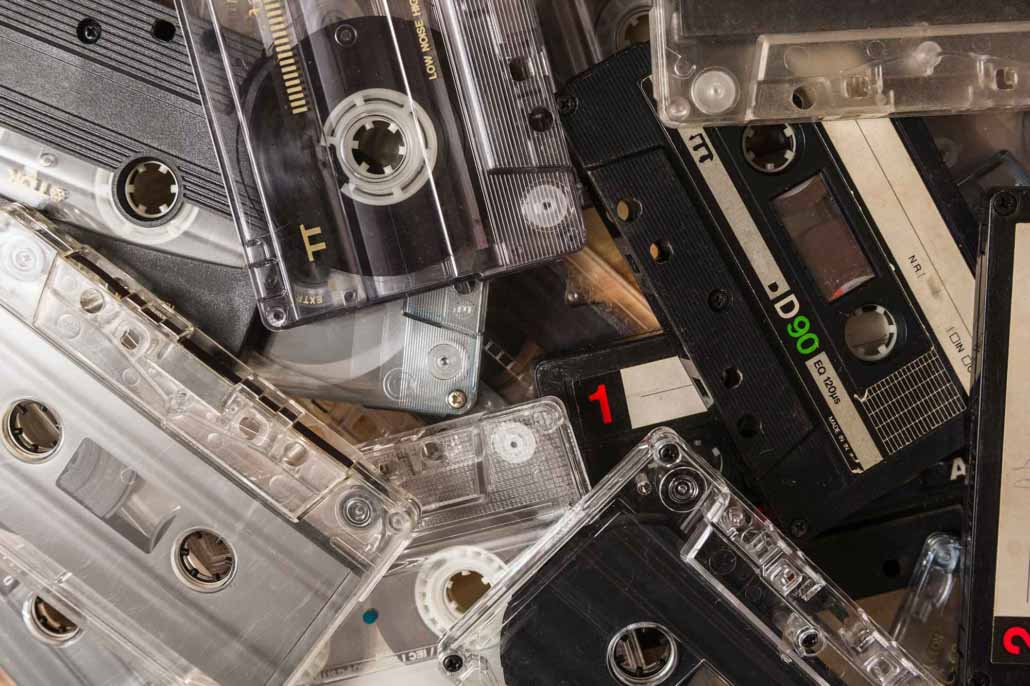
Image by: Freepik.com
The portable audio cassette tape player has undoubtedly played a significant role in transforming the way we consume music. It revolutionized the way music was listened to on the go, allowing people to carry their favorite tunes wherever they went. But, have you ever wondered who invented this game-changing device?
Who invented the audio cassette tape player?
The credit for inventing the portable audio cassette tape player goes to Dutch engineer and entrepreneur Lou Ottens. In the early 1960s, Ottens was working at Philips, a leading electronics company. He led a team of engineers who were tasked with developing a compact and user-friendly alternative to the bulky reel-to-reel tape recorders of that time.
Ottens and his team faced many challenges during their quest to create a portable audio player that would fit in one’s palm yet deliver exceptional sound quality. They had to overcome technical hurdles like reducing size without compromising sound fidelity and finding a way to make it affordable for consumers.
After years of research and development, Ottens unveiled his groundbreaking invention – the compact cassette tape – in 1963. This small plastic case housed two miniature spools that held magnetic tapes, allowing users to record and playback their favorite music anytime, anywhere.
The cassette tape player became a hit with the public
The introduction of the portable audio cassette tape player not only transformed the music industry but also shaped our everyday lives. It sparked a new era of personal entertainment and fostered an unprecedented level of musical freedom.
Today, we owe our gratitude to Lou Ottens for his remarkable innovation that forever changed how we enjoy our favorite tunes on the go. His invention paved the way for subsequent advancements in portable audio technology, leading us into an age where we can carry entire libraries of music effortlessly in our pockets.
So next time you pop in your earphones or listen to your favorite playlist on your smartphone or MP3 player, remember Lou Ottens – the visionary behind this incredible invention that continues to captivate millions around the globe.
The Digital Revolution in the World of Sound Recording
The world of sound recording has undergone a monumental transformation with the advent of the digital revolution. Technology advancements have revolutionized the way music is created, produced, and consumed. Gone are the days of analog tape machines and physical recording studios as digital audio workstations (DAWs) have become the new norm in the music industry.
This shift from analog to digital has not only streamlined the process of sound recording but has also opened up endless possibilities for artists and producers to explore their creative boundaries.
Milestones in Digital Audio Recording Technology
- DAW Concept: Groundbreaking concept of recording and editing audio digitally | late 1970’s
- Compact Disc: Milestone in the field of music and technology | early 1980’s
- DAT Tape: Revolutionized the way audio data was stored | late 1980’s
- Audio Sofware DAW: Revolutionized the consumer audio production | Late 1990s – present
The first DAW (Digital Audio Workstation)
While some may think that the era of digital innovation started with the advent of digital audio workstations in the 1980s, it is worth noting that the first commercial digital recordings actually go back to 1977.
Dr. Tom Stockham’s pioneering Soundstream Digital system produced by Soundstream Inc. was responsible for these groundbreaking recordings. After showcasing impressive opera demos at a prominent event in Los Angeles, Stockham caught the attention of Lincoln Majorca from Sheffield Records, who then invited him to produce The Art of Fugueing album under his Town Hall label.
The success of this project paved the way for future iconic recordings such as those featuring the Philadelphia Symphony, Virgil Fox, and the Boston Pops later that year. This early adoption and experimentation with digital recording technology laid a strong foundation for what would become a revolution in music production.
Soundstream was initially used primarily in professional studios due to its high cost and complex setup. However, its impact on the music industry was undeniable. It laid the foundation for subsequent advancements in DAW technology that would eventually make digital recording accessible to musicians of all levels. Later in the article, we will delve into the history of DAWs.
The Compact Disc is Released
The first compact disc, also known as CD, was introduced to the world in 1982. This groundbreaking invention marked a significant milestone in the field of music and technology. With its ability to store and play digital audio, the compact disc quickly gained popularity and revolutionized the way we listen to music.
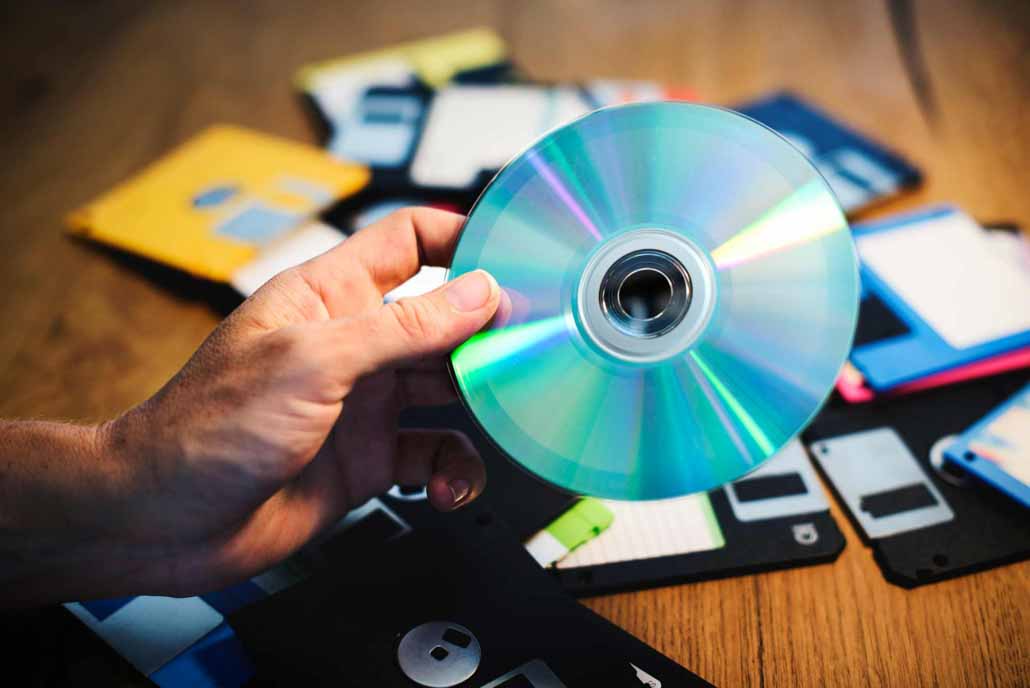
Image by: Freepik.com
Who invented the audio compact disc?
The audio compact disc was invented by a team of brilliant engineers and scientists. However, it was primarily developed and introduced to the market by two prominent companies: Philips and Sony.
In the late 1970s, Philips engineers began researching and developing a new digital audio format that would replace traditional analog records. They aimed to create a more durable, high-quality medium for recording and playing music. Their efforts led to the birth of the compact disc.
Meanwhile, Sony had been working on their own digital audio format called Digital Audio Disc (DAD). Recognizing the potential of collaborating with Philips, they joined forces in 1979 to create a standardized version of the compact disc.
The collaboration between these two tech giants resulted in the creation of a universal standard for digital audio storage known as the Red Book. This standard specified not only the physical dimensions and technical specifications of CDs but also defined how data should be stored and retrieved.
The first commercial compact disc player released
On August 17th, 1982, Philips released their first commercially available compact disc player called CD100. This marked an important milestone in history as it introduced a new era of music listening experience characterized by superior sound quality and durability.
The 1990s Changed the Consumer Music Experience
The 1990s marked a significant turning point in the way consumers experienced music. The compact disc quickly became all the rage, captivating music enthusiasts worldwide with its superior sound reproduction and portability. Its sleek design and durability made it an instant hit, replacing vinyl records and cassette tapes as the preferred format for music lovers.
The rise of the audio CD not only enhanced the listening experience but also paved the way for technological advancements in digital music that we continue to enjoy today.
The DAT Tape hits the audio recording industry
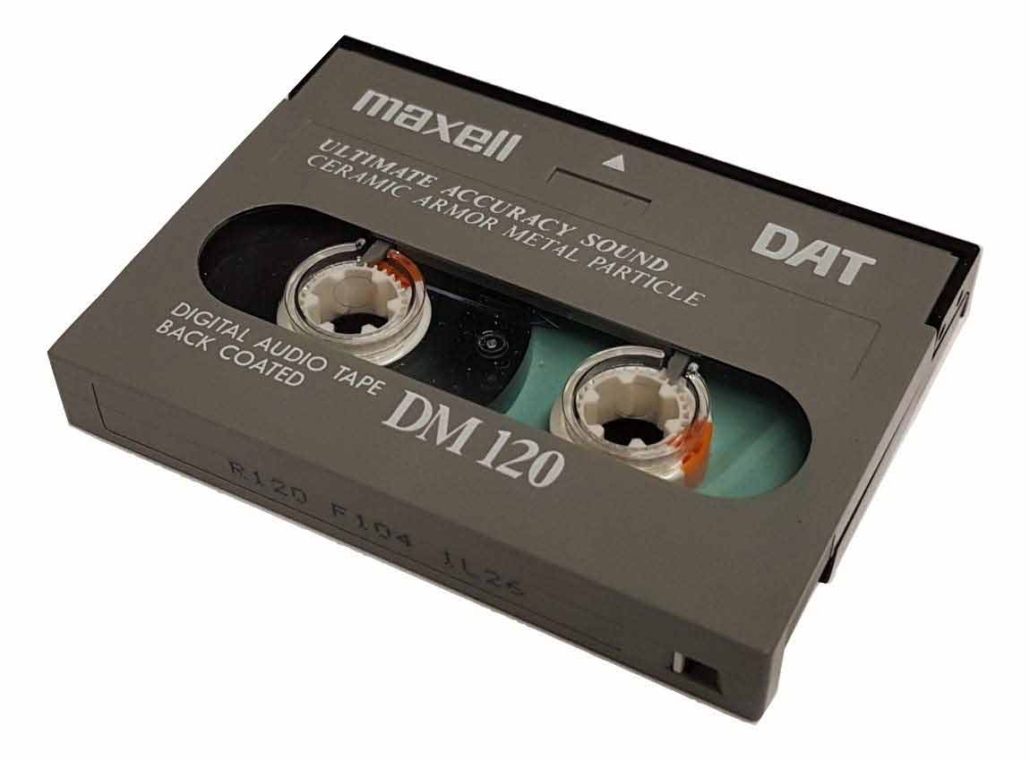 The DAT tape recorder, also known as the Digital Audio Tape recorder, was developed and introduced by the Japanese corporation Sony in collaboration with Phillips in 1987. Together, they revolutionized the audio recording industry by creating a compact and efficient digital storage solution for music and other audio content.
The DAT tape recorder, also known as the Digital Audio Tape recorder, was developed and introduced by the Japanese corporation Sony in collaboration with Phillips in 1987. Together, they revolutionized the audio recording industry by creating a compact and efficient digital storage solution for music and other audio content.
This groundbreaking technology revolutionized the way audio data was stored and made it possible to achieve high-quality sound reproduction with unprecedented accuracy. The invention of the DAT tape marked a significant milestone in the history of audio recording, paving the way for new possibilities such as the ADAT and hard disk recorders.
Recording studios heavily relied on DAT tapes to capture the digital 2-track masters. These tapes were the go-to choice due to their exceptional recording capabilities and reliability in preserving high-quality audio.
The Software-Based DAW is Born
The 1980s marked a significant turning point for digital audio workstations (DAWs) as personal computers like the Apple II, Commodore Amiga, and Atari ST started to pack enough processing power to handle sophisticated audio editing.
This technological breakthrough paved the way for software-based DAWs to become a feasible reality. In 1983, a milestone moment was reached with the introduction of the MIDI format – a universal standard co-developed by industry leaders Roland and Dave Smith.
This game-changing development allowed data to be easily scanned, stored, and initiated from computer systems. The convergence of powerful personal computers and MIDI laid the foundation for an era of limitless creative possibilities in music technology.
Digidesign Hits the Scene
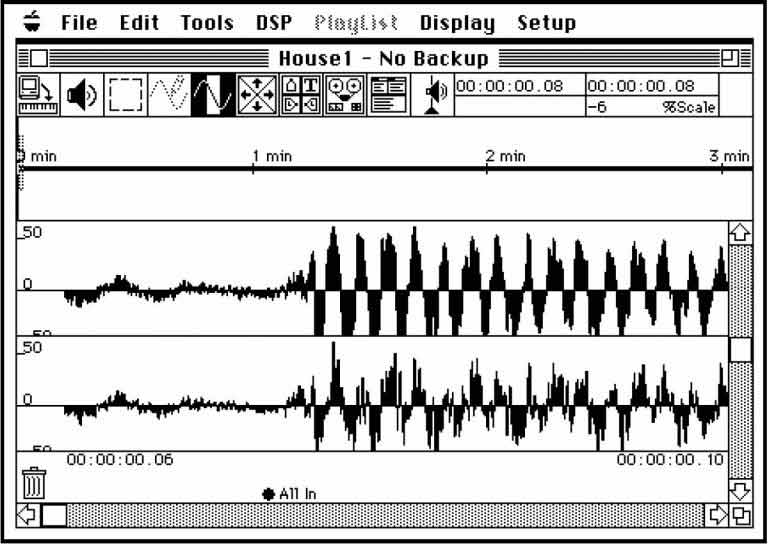
Screenshot of Digidesign Sound Tools. Image Credit: yamaha.com
Digidesign made a significant move in the audio industry by launching software called Sound Designer, a cutting-edge software designed to edit samples from sampler keyboards. As time went on, this software seamlessly integrated with Apple-compatible hardware and transformed into the renowned Sound Tools.
When it was first introduced at NAMM in 1989, this innovation only had two tracks for recording, and it came with a hefty price tag. However, it swiftly evolved within two years to become the industry’s go-to digital audio workstation (DAW) – none other than the industry standard Pro Tools. Its price reflected the immense value it brought to the table, making it a worthwhile investment for professionals seeking top-notch audio production capabilities.
Opcode Studio Vision
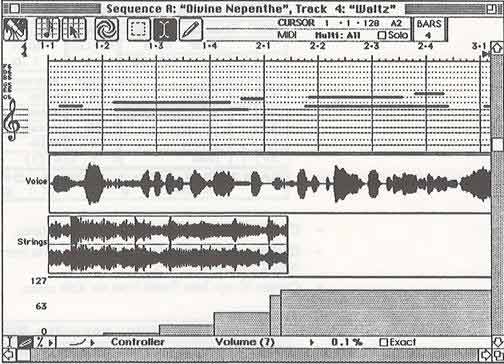
Screenshot of Opcode Studio Vision 1.0. Image Credit: yamaha.com
Another remarkable milestone, Opcode company made waves a year later with the launch of Studio Vision, an updated version of their Vision MIDI sequencing software. This groundbreaking software, compatible with Mac systems, introduced the revolutionary feature of digital audio recording through Digidesign hardware.
Studio Vision became the very first recording application to seamlessly combine audio and MIDI recording and editing capabilities in one powerful package.
Digidesign’s release of its TDM system in 1994 marked a significant milestone in the world of digital audio. With its open architecture and multichannel capabilities, this 24-bit digital audio bus revolutionized what was achievable for Pro Tools plugin developers. It provided them with endless possibilities to unleash their creativity and take audio production to new heights.
Pro Tools and Studio Vision pioneered the music production industry and paved the way for other incredible digital audio workstation (DAW) programs to thrive. From Logic Pro to Ableton Live, Cubase, Garage Band, and many more, musicians now have a diverse range of powerful tools at their disposal, each with its own unique strengths and features.
The DAW Today
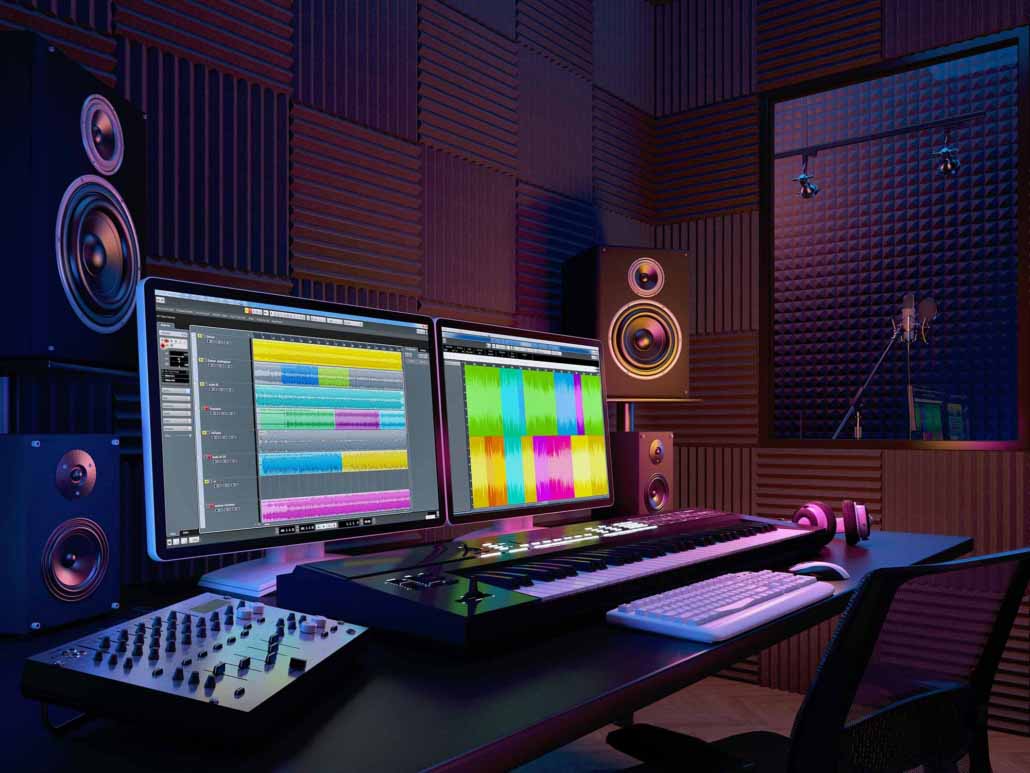
By Projectseasun – Freepik.com
Over the course of the last two decades, Digital Audio Workstations (DAWs) have witnessed remarkable advancements, revolutionizing the recording process. Although their core functionality was established in the late 1990s, subsequent years have seen significant evolution.
This progress has had a profound impact on the music industry by transforming how recordings are made. With personal computers becoming more powerful and cost-effective, the accessibility of high-quality audio recording and mixing has skyrocketed.
Now, nearly anyone can embark on their musical journey from the comfort of their home studio. This accessibility has paved the way for an incredible array of distinct genres and production styles to emerge. The limitations and unique characteristics of these DAW systems have played a crucial role in shaping this creative diversity.
The MP3 file format shakes the music industry
Image by: Freepik.com
The MP3 file format released in 1995 has shaped the music industry, paving the way for a digital revolution that has forever changed how we consume and distribute music. With its small file size and high audio quality, MP3s have made it easier than ever for artists to share their music with the world.
One of the key benefits of the MP3 format is its accessibility. Gone are the days of carrying around bulky CDs or cassette tapes. Now, all it takes is a simple download or streaming service to access an entire library of songs. This convenience has led to a surge in music consumption and has allowed listeners to explore a wide range of genres and artists.
The iPod MP3 Player is Released
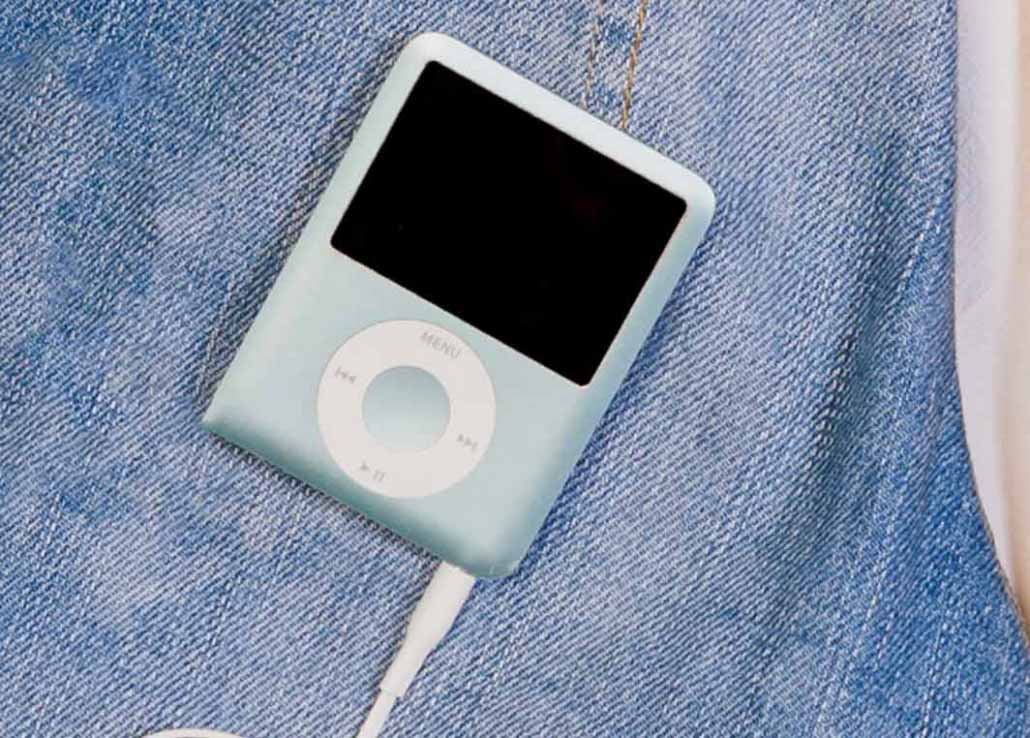
Image by: Freepik.com
The iPod player, a game-changing device that redefined portable music, was released to the public on October 23, 2001. This iconic product, developed by Apple Inc., quickly gained popularity and became a cultural phenomenon.
With its compact size, sleek design, and revolutionary features, the iPod player revolutionized the way we listened to music on the go. Its release marked a pivotal moment in technology history and paved the way for future innovations in portable entertainment.
Furthermore, the MP3 format has enabled independent musicians to thrive in ways never before possible. With online distribution platforms like Bandcamp and Soundcloud, artists can self-publish their music without relying on traditional record labels. This gives them greater creative control over their work while reaching audiences globally.
While the rise of MP3s brought about both positive changes and challenges for the music industry, it cannot be denied that it has opened up new opportunities for accessibility and distribution. As technology continues to evolve, we can expect further advancements in how we consume and enjoy music while ensuring that artists are fairly compensated for their talent and hard work.
Today’s Portable Music Media

Image by: Freepik.com
Today, we have phones and portable devices that can record and play music anywhere. Gone are the days when we had to carry around bulky cassette players or CDs just to enjoy our favorite tunes. We can now have our entire music library at our fingertips, ready to be streamed or played anytime, anywhere. Whether it’s during a morning jog, a long commute, or simply relaxing at home, these portable devices have become an integral part of our lives, providing us with endless entertainment and convenience.
Conclusion
In conclusion, understanding the birth and rise of analog audio recording allows us to appreciate how far we have come in our pursuit of capturing sound faithfully. While digital technology has undoubtedly revolutionized the industry, the legacy of analog audio recording remains an integral part of our musical heritage.

